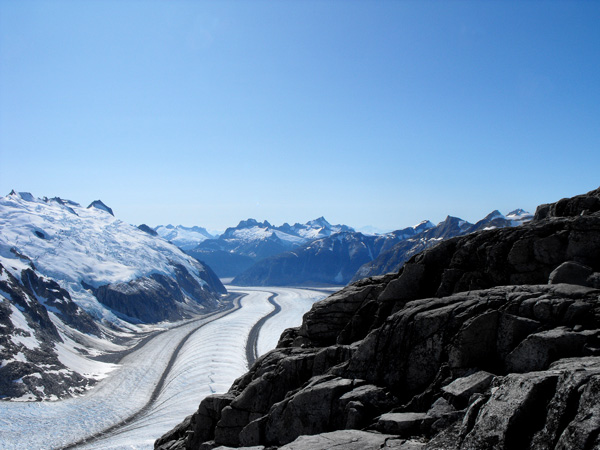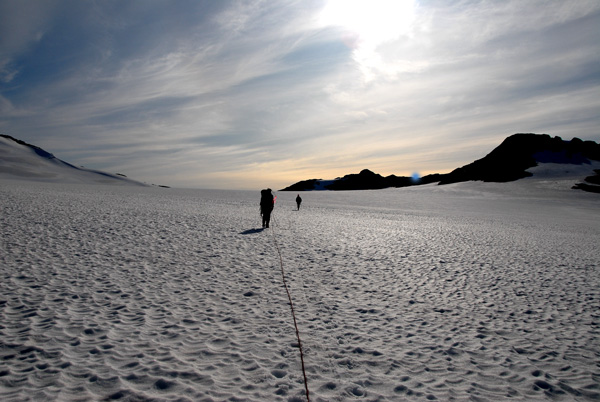Matt Heavner will
describe the Juneau Icefield in Southeast Alaska. Anyone who has
visited the city of Juneau, Alaska has very likely visited the
Mendenhall Glacier, which is just the very tip of the icefield. The
Juneau icefield is the fifth-largest ice field in the Western
Hemisphere extending through an area of 3,900 square kilometers.

The view from JIRP Camp 18 at the top of the Vaughan-Lewis icefall
overlooks the
Gilkey Trench. The ogives show annual acceleration of the ice flow
with lateral moraine.
With a primary focus
on describing (with numerous photos) the natural beauty of the
icefield, nunataks, and bordering temperature rainforest, the
presentation will provide a historical overview of the Juneau
Icefield Research Program (JIRP) - an annual research program that
began in 1946 and continues to the present. Matt will also touch
upon climate change monitoring and impacts, opportunities for
participation in JIRP, and highlight a few adventures on the
icefield (e.g. subglacial caving)

Traversing the Lemon Creek Glacier near JIRP Camp 17 for a GPS
survey
to determine glacial velocity and mass balance.
Matt led the South
East Alaska Monitoring Network for Science, Technology, Education
and Research (SEAMONSTER) project, a NASA funded research effort on
the Mendenhall and Lemon Creek glaciers from 2006-2010. In addition
to being on the faculty at the University of Alaska Southeast in
Juneau from 2003-2010 in the Environmental Science program, Matt was
also part of the Juneau Icefield Research Program faculty in 2009
and 2010. After joining Los Alamos National Lab in 2010, Matt has
maintained instrumentation and interest in the Juneau icefield.